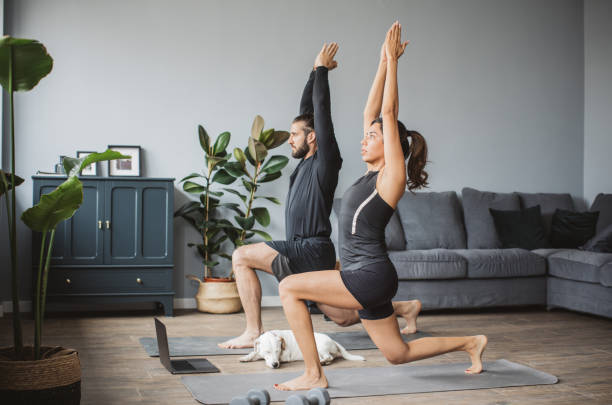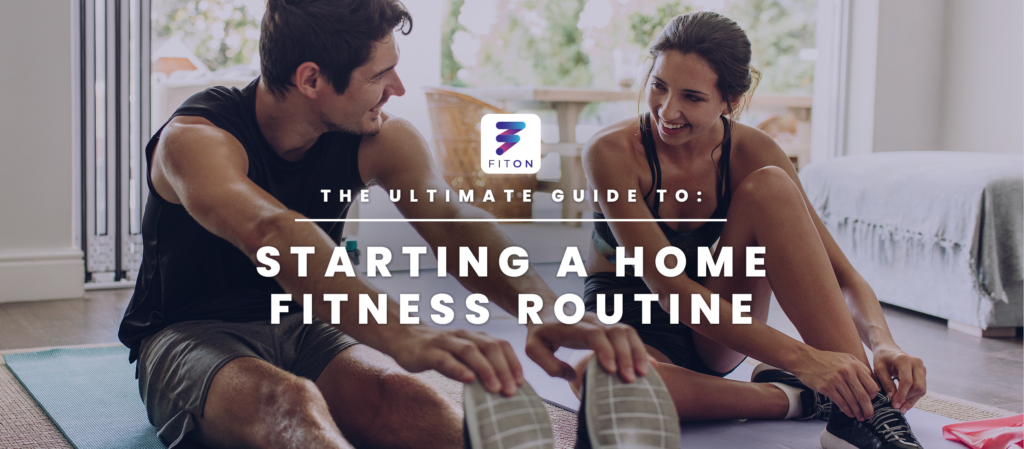In a world where gym memberships and fitness classes are increasingly accessible, the idea of working out at home often feels like an afterthought. Yet, the comfort and convenience of exercising from your living room or bedroom offer a multitude of benefits. Whether you’re trying to save money, avoid gym crowds, or simply prefer the privacy of home workouts, establishing a fitness routine at home can be both effective and enjoyable. Here’s how to create a comprehensive and sustainable home fitness routine that aligns with your goals and lifestyle.

Assess Your Fitness Goals
Before you start, it’s crucial to define what you hope to achieve with your home fitness routine. Are you aiming to lose weight, build muscle, improve flexibility, or simply maintain overall health? Your goals will dictate the types of exercises and routines you incorporate. For example:
Weight Loss: Focus on high-intensity interval training (HIIT) and cardio workouts.
Muscle Building: Incorporate resistance training with bodyweight exercises or weights.
Flexibility and Mobility: Include yoga, stretching, and mobility exercises.
Design a Balanced Routine
A well-rounded fitness routine incorporates various components to ensure overall physical development. Aim to include:
Cardiovascular Exercise:
Cardiovascular or aerobic exercises increase your heart rate and improve endurance. Options include:
Jump Rope: Great for cardiovascular fitness and coordination.
Running or Jogging: If you have space, running or jogging in place can be effective.
Dancing: Follow an online dance workout or simply dance to your favorite music.
Strength Training:
Strength training builds muscle and boosts metabolism. Effective exercises include:
Bodyweight Exercises: Push-ups, squats, lunges, and planks.
Resistance Bands: Useful for adding resistance and variety to your routine.
Free Weights: Dumbbells or kettlebells can be incorporated if you have them.
Flexibility and Mobility:
These exercises improve range of motion and reduce injury risk:
Yoga: Follow online yoga classes or apps to guide you through various poses.
Dynamic Stretching: Perform stretches that involve movement, such as leg swings or arm circles.
Core Work:
A strong core supports overall stability and strength. Incorporate exercises like:
Crunches: Standard and variations such as bicycle crunches.
Russian Twists: Great for targeting the obliques.
Leg Raises: Effective for lower abdominal muscles.
Create a Weekly Workout Schedule
Consistency is key to seeing results, so establishing a weekly schedule can help keep you on track. Here’s a sample schedule:
Monday:
Full-Body Strength Training
Warm-up: 5-10 minutes of light cardio
Circuit: Push-ups, squats, lunges, planks, and dumbbell rows (3 sets of 12 reps each)
Cool-down: Stretching
Tuesday:
Cardio and Core
Warm-up: Jumping jacks or high knees (5 minutes)
Cardio: 20-30 minutes of running or jump rope
Core: Crunches, leg raises, and Russian twists (3 sets of 15 reps each)
Cool-down: Stretching
Wednesday:
Yoga and Flexibility
30-45 minutes of a guided yoga session focusing on flexibility and relaxation
Thursday:
Strength Training (Upper Body)
Warm-up: Arm circles and shoulder shrugs (5 minutes)
Exercises: Push-ups, dumbbell shoulder presses, bicep curls, and tricep dips (3 sets of 12 reps each)
Cool-down: Stretching
Friday:
Cardio and Lower Body
Warm-up: 5 minutes of light cardio
Cardio: 20-30 minutes of dancing or brisk walking
Lower Body: Squats, lunges, and calf raises (3 sets of 15 reps each)
Cool-down: Stretching
Saturday:
Active Recovery
Light activity like a leisurely walk, gentle stretching, or a casual bike ride
Sunday:
Rest or Light Stretching
Take it easy to allow your body to recover
Utilize Online Resources
The internet offers a vast array of resources to enhance your home fitness routine. Consider:
Workout Apps: Many apps provide structured workout plans and virtual trainers. Examples include MyFitnessPal, Nike Training Club, and Fitbod.
YouTube Channels: There are numerous fitness YouTubers offering free workout videos and routines. Channels like FitnessBlender, Blogilates, and HASfit offer diverse workouts catering to different fitness levels and goals.
Virtual Classes: Some fitness studios and trainers offer virtual classes via platforms like Zoom or Instagram Live. These can provide a sense of community and real-time feedback.
Equip Your Home Gym
While many effective workouts require minimal equipment, having a few essential items can enhance your routine:
Resistance Bands: Versatile and affordable, resistance bands are great for strength training and flexibility exercises.
Dumbbells or Kettlebells: These can add variety and intensity to your workouts, especially for strength training.
Yoga Mat: Essential for comfort during floor exercises and stretches.
Jump Rope: A great tool for cardiovascular workouts and coordination.
Stability Ball: Useful for core workouts and can serve as an alternative to a chair for improved posture.
Stay Motivated
Maintaining motivation can be challenging, but there are strategies to keep you engaged:
Set Specific Goals: Define short-term and long-term goals to track progress and stay motivated.
Create a Playlist: Build a workout playlist with energizing music to boost your mood and performance.
Track Your Progress: Use a journal or app to log your workouts and monitor improvements.
Join Online Communities: Engage with fitness groups on social media or forums to find support and accountability.
Reward Yourself: Celebrate milestones with non-food rewards, such as new workout gear or a relaxing activity.
Addressing Common Challenges
Lack of Space: If you’re limited on space, focus on bodyweight exercises and use vertical space for storage solutions. Multi-purpose furniture, like a foldable desk or wall-mounted shelves, can help.
Distractions: Set up a dedicated workout area and establish boundaries with household members during workout times.
Consistency: Make your workouts a non-negotiable part of your daily routine by scheduling them at the same time each day and treating them with the same importance as work or social commitments.
Embracing Variety and Flexibility
One of the benefits of working out at home is the flexibility to mix things up. Regularly changing your routine can prevent boredom and challenge different muscle groups. Experiment with:
New Workouts: Try different exercise styles such as Pilates, high-intensity interval training (HIIT), or kickboxing.
Outdoor Workouts: If possible, take your workouts outside for a change of scenery and fresh air.
Family Involvement: Make fitness a fun family activity by incorporating exercises that everyone can enjoy.
Conclusion
Creating a fitness routine at home is not only feasible but can be highly effective with the right approach. By defining your goals, designing a balanced routine, leveraging online resources, and staying motivated, you can achieve your fitness objectives without the need for a gym. Embrace the flexibility and convenience of home workouts to build a healthier, stronger, and more resilient version of yourself. Remember, the best fitness routine is one that you enjoy and can stick with, so make it your own and enjoy the journey to better health.



